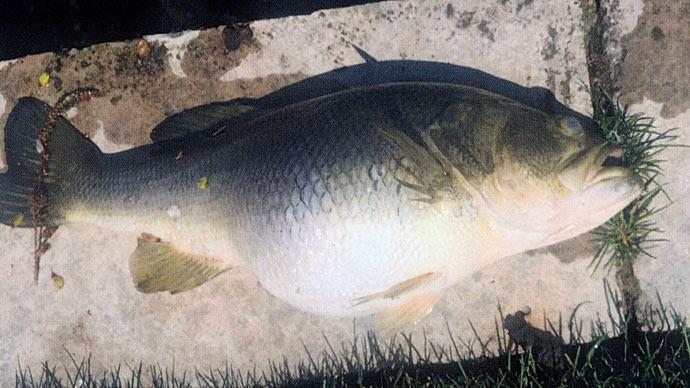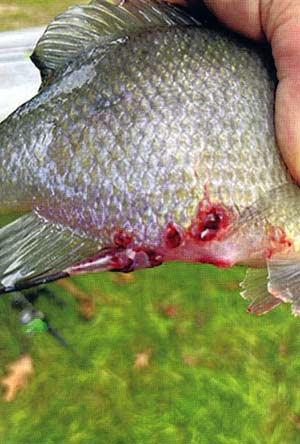
Ever catch a fish that looks a little strange to you? Maybe has a red spot on it or a scar-looking scrape? Maybe you're looking over the edge of your dock and see some fish with white-fuzzy patches on their skin. Have you seen little yellow knots just under the skin, by the fins? Or, maybe your fish aren't feeding normally when they should be?
Your nature is to take care of your babies. You've gotten them this far and don't want anything to interrupt.
Pond Pros get phone calls each year about fish with sores, or acting strangely, or covered in little red dots or with lesions, or maybe scarring...or dying.
What's a pondmeister to do?
First things first. Be alert to changes. Changes in water color, changes in fish behavior, changes in the way your fish look. When a fish comes down with an affliction, it's almost always a response to something else—a stressor, if you will. Stressors may take one of many forms, such as water quality degradation, a weather event, being chased by predators such as cormorants or pelicans, or river otters, or maybe running out of oxygen due to the dreaded mid-summer turnover. I often tell this cheesy little analogy. The neighbor's 94-year-old granddad decided to trek to the mailbox, a quarter-mile down at the end of his driveway. It's 19 degrees outside, the wind is howling—and all he's wearing is his boxers. He gets the mail and makes it back to the house. Three days later, he's got a runny nose and a slight fever and isn't feeling quite well. Another couple of days go by, his sinuses are infected, and it moves to his lungs. A week later, he died of pneumonia. What killed him? The journey to the mailbox.
Think of that sequence of events as you quickly assess your fishery. Fish diseases typically start with some stressor. You have a better starting point if you can identify that stressor (or stressors). For example, if fish have been feeding strong but suddenly stop, there's a sign. If you see a few fish moving slowly around the pond's edge, that's a symptom. If you watch fish around your feeder and see several with red sore-looking spots, that's a clue.
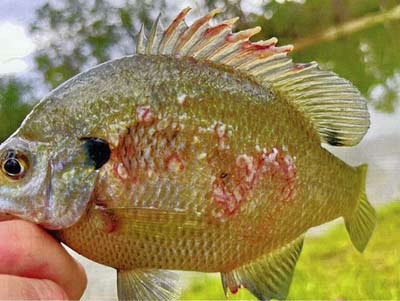
I got a call from a county extension agent in Wichita County, Texas, back on March 1. It seems a lady near Wichita Falls had some catfish dying. They were lethargic, coming to the pond's edge and sitting there before rolling over, dead. They had what looked like yellow lesions and loose spots on their skin. Their gills were puffy and covered in yellow fuzz.
He wasn't sure what was happening. Maybe a disease?
That area is prone to golden algae, so that's the direction I took with questions. "What's the water look like?" Do all the fish have that yellow-stain-looking tint to their skin? He texted some photos, and the water looked terrible. They'd been in an extended drought, and this pond level had dropped at least three feet over the winter. I suggested they send a preserved water sample to Bill Cody, a microbiologist in Ohio. Bill confirmed what I expected. Golden algae. When the water evaporated, it allowed the notoriously high salinity content to climb, offering the opportunity for these toxic algae to outcompete the good algae and expand to a toxic level. The agent asked if there was anything the landowner could do to stop it. The best advice was to exchange some water, but there was no way to do that. If they treated the algae, it would have exacerbated the problem. They were late to the game to figure it out because they didn't know what they didn't know.
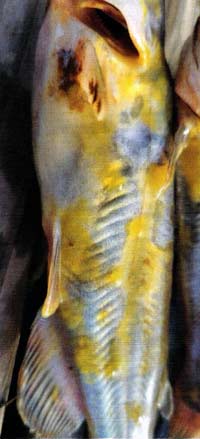
The best news for this landowner was the catfish. They were all bullheads. Nature eradicated them. The golden algae has passed, they've received some rain, and the local irrigation district will soon open the irrigation ditch so that she can refresh her water. That will solve the problem...for now.
Ron Ardoin, from Lake Charles, Louisiana, owns a pond management company. He sent photos of some bluegills that had red sores all over them. He wanted to know what to do about that. The circumstances of that pond were similar to ponds all across the U.S. The fish are well-fed—high-protein fish food pretty much every day. Over several years, the bluegill grew and grew and grew larger. More biomass commanded more fish food. This small pond, measuring less than an acre, has a thriving bass/bluegill fishery, but the big bluegills became slightly crowded for their space. There were enough bigger bluegills to escape predation from bass, so they kept growing. About three years in, it was reported that those fish were running into each other, fighting for fish food. Feeding was a frenzy when the feeder went off. It was expected that a batch of these fish would linger near the feeder much of the day, waiting to battle for nuggets tossed at the same time every day. Water quality degraded slightly, and crowded fish were competitive and spent time up close and personal.
Little red bumps formed on the sides of some of the fish.
What gives?
It could be a bacterial infection, especially one called "Aeromonas." But it could also be from a parasite, likely one called "Heteropolaria." I've watched fish with these afflictions. Bluegill with the parasite try to scratch it off by scooting against rocks or dock pilings and trying to scrape it. Bacterial infections typically cause a different reaction. The good news about these things is that fish often heal from it as the pathogen goes through its life cycle.
Don't rest on that good news, however. Call a pro and see advice if you see something like that on your fish. My typical advice is to medicate your feed with an over-the-counter antibiotic you can buy at the feed store. But I've been told it's not cool to tell people to do that because I'm not a veterinarian. You can probably count on one hand the number of veterinarians that know how to treat sick sport fish.
If your fish are looking or acting sick, the first reasonable emergency response is to exchange water, if you can. If not, aerate it. If not, good luck, seek a rapid diagnosis and then decide what action to take.
What are your resources? First, call your pond management pro. They may have a relationship with a fish pathologist and can expedite things for you. Time is of the essence. Had the neighbor's granddad had some help two days after that fateful trip to the mailbox, he might have seen his 95th birthday.
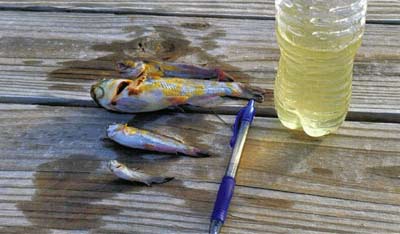
I contacted Dr. Lester Khoo, a veterinarian and Ph.D. professor of aquatic animal health at Mississippi State University, to seek advice for folks with fish pathology problems. He focuses primarily on channel catfish and aquaculture situations since that's a big industry in his part of the world. But he told me some pathogens that attack sport fish are the same as those that hit the commercial catfish industry. Columnaris bacterial infections are relatively common pathogens that grace his lab. But he sees a fair number of parasites as well. Flukes, grubs, and roundworms are common.
If your fish are afflicted, decide what to do. Make a call. Seek advice. Dr. Khoo's lab is available. I asked him the best protocol to start a conversation with him. He prefers emails with fish photos to start. (khoo@cvm.msstate.edu). After he sees the outside of the fish, he's likely to ask for a fresh sample overnighted to his lab...on ice. Don't freeze the fish. I asked him what about sending live fish. He loves that idea if it's possible. A pond-pro can do that. Frozen fish can't be diagnosed.
I also spoke with Dr. Tim Bruce, Assistant Professor, Aquatic Animal Health, School of Fisheries, Aquaculture and Aquatic Sciences, Auburn University. His department is also highly interested in working with private pond owners and managers with fish health concerns. Reach him at tjb0089@auburn.edu. He's happy to help.
There's also a diagnostic lab at the University of Florida and one in Washington State. Texas A&M recently hired a fish disease specialist as well. There are diagnostics available within limits. Some labs are only allowed to advise people in their state. They may be able to diagnose a disease for you but can't legally prescribe a treatment. But they may be able to work with your local veterinarian for a prescription. And expect to pay a small fee to cover lab costs. Each lab is different.
If you are pushing your pond to its limits, and your resources for exchanging water or aeration or dealing with fish health issues are limited, be proactive and find someone who can diagnose issues—before they happen. That way, when some unknown fish affliction hits your precious waters, you can quickly get on top of it. You'll have a solid resource on the sidelines, ready to help. If you don't have good resources, wear warm clothes on that trip down the driveway to the mailbox on the next frigid winter day.
Reprinted with permission from Pond Boss Magazine



